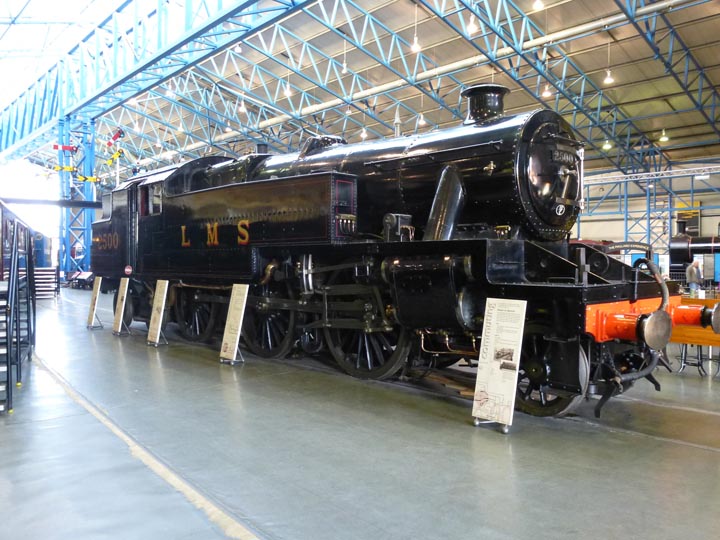Steam Locomotive Fire Cleaning
 LMS tank locomotive 2500 at the York Railway Museum. This was one of the locomotives whose fire I cleaned while at Shoeburyness. It was numbered 42500 at that time The first thing to do was to come on shed with as little fire as possible. It was about five miles from Southend to the end of the line at Shoeburyness. At Southend I would look at my fire and if it was a little thick I would ask my driver to “knock a bit out of it”. We would leave the station like a scalded cat and he would leave the cut off down to create a good blast on the fire to suck ashes out through the stack. This worked for me but there were a lot of houses that backed onto the line and there were complaints about washing hung out to dry being covered in smuts. Needless to say we didn’t do this on a Monday, the traditional washing day. On shed after shoveling out the smokebox, being careful not to throw the ashes into the wind, I had to tackle the fire. To do this there was a short slice, a long slice and a pricker bar. The short slice was a six foot steel shovel and the long slice was eight or nine feet long. The pricker was a two inch bar. Each one of these has a circular handle at the end and I quickly learned to put my hand through the handle to avoid being crushed against the cab side or roof. The procedure was simple to describe. The live coals would be thrown forward with the slice exposing the clinker in the back half of the firebox. This had to be broken up with the pricker then shoveled out of the firebox through the firehole and out of the cab on to the ground. The live coals in the front had then to be shoveled back and the clinker in the front broken up and shoveled out through the firehole. A few shovelsful of coal on the live coals would then bed the engine down until it was next required. Needless to say the slices became hot, red hot at times and they would bend so as to become useless. Cold water would not help because the shovel part was bent out of shape. On occasions I went to my driver and asked him to move the engine a few feet while I straightened the shovel under a driving wheel. To make it worse we did not use gloves, this had to be done using a piece of cotton waste which frequently started to smolder with the heat. Only those firemen who were courting used gloves to keep their hands soft – girlfriends didn’t like the feel of calloused hands on sensitive parts of their anatomy. A couple of years later I became a Management Trainee with British Railways and at one time I was sent to gain some experience at Reading locomotive depot which still had steam locomotives. The system here was different from Shoeburyness in that there was a gang of men who did nothing else but clean fires. I was walking around one day and fell into conversation with a fire cleaner. “Who the heck are you?” “I’m a management trainee.” “I suppose you are one of those college kids who have never done a hard day’s work in their life.” By this time I was surrounded by four or five fire cleaners “I know how to clean a fire.” The conversation got a little heated. “OK. So let’s see you clean the fire on this engine.” By this time I was mad. I climbed up on to the footplate, got out the fire irons and flung open the firedoors only to find that it had already been cleaned. I looked down and they all laughed and cheered. They had put one over on one of those management types. The sad part of this story is that the firecleaners, boilersmiths and others who worked on steam were all made redundant when diesels came in. Ottawa Valley Associated Railroaders Interchange March 2019 |
